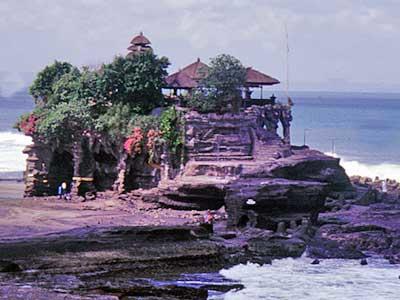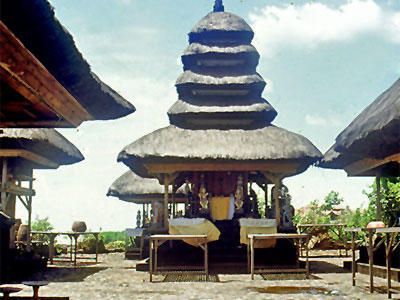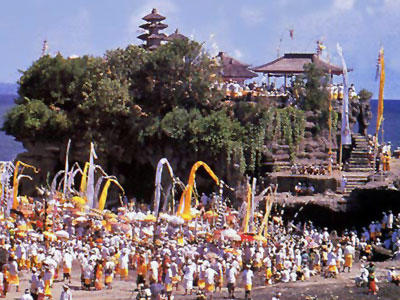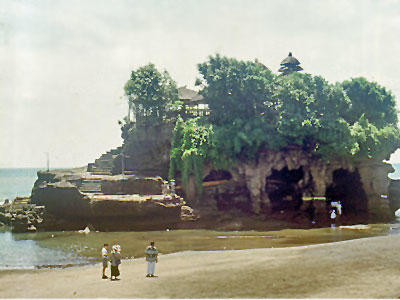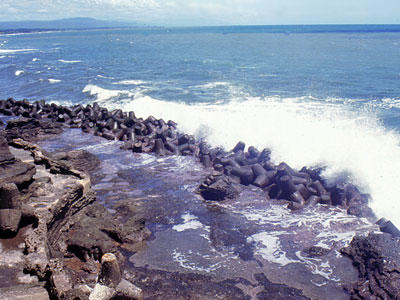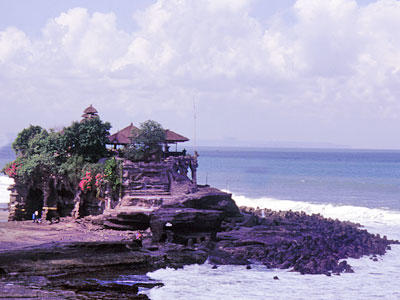Tanah Lot Temple
Tanah Lot Temple is a complex of wooden structures with origins in the fifteenth and sixteenth centuries, built on a large coral rock separated from the nearby island of Bali. Once joined to Bali, the complex is now separated from the mainland because of erosion. One hundred concrete supports were installed along its shoreline as protection in 1986, but they greatly compromised the aesthetic integrity of the temple and its environment. The concrete tetrapods redirected waves and caused erosion at a different site along the shore while also causing sand accumulation at the sea floor, thus affecting biological life within the coral reef. An increase in tourism to the attractive island also put a strain on the site’s architecture and landscape.
2000 World Monuments Watch
Subsequent to the site’s inclusion on the 2000 World Monuments Watch, WMF secured funding from American Express to complete a conservation study to understand technical conditions at the site, as well as to promote sustainable tourism solutions to allow continuing public enjoyment of the site and develop strategies for improving protection of the historic and natural features of the complex. Funds were also applied to the construction of a 46.5-meter fence around the temple and a 110-meter fence around the entire Tanah Lot site. Spatial boundaries of the site were redefined and returned to traditional Balinese standards, which included viewing the sacred building unit as the main or inner zone, the buildings for preparing and holding religious activities as the middle zone, and the area for evening activities, including economic activities, as the limited development, or low zone. The latter zone was structured to support and receive tourists.
Tanah Lot temple is an ancient Hindu temple dedicated to the gods of the sea. The buildings were built after religious figure Dang Hyang Nirartha’s sacred journey (tirtha yatra) to Bali in the fifteenth century and have never lost their original function. As a result of continued use, Tanah Lot has been well maintained and remains a site of religious significance to the Balinese people.

